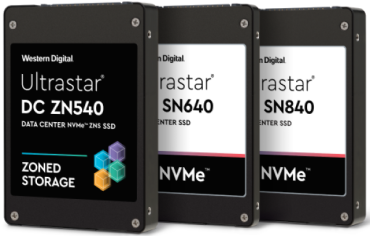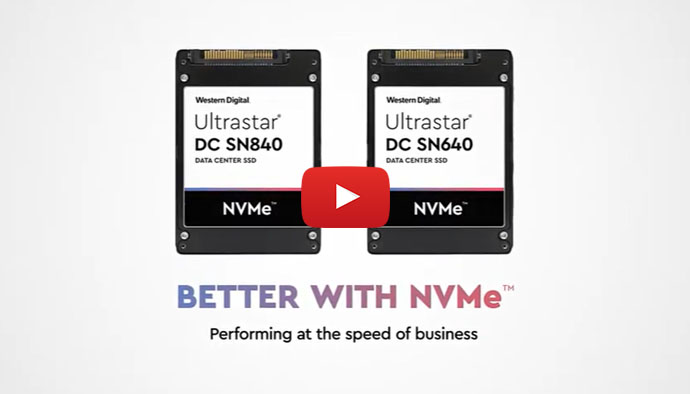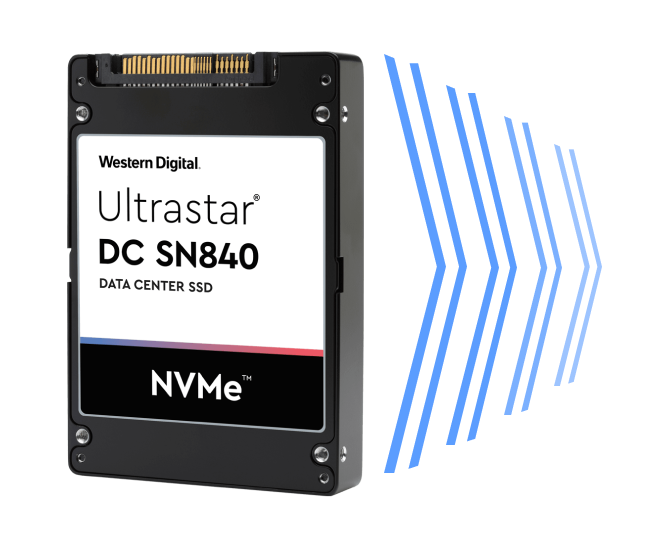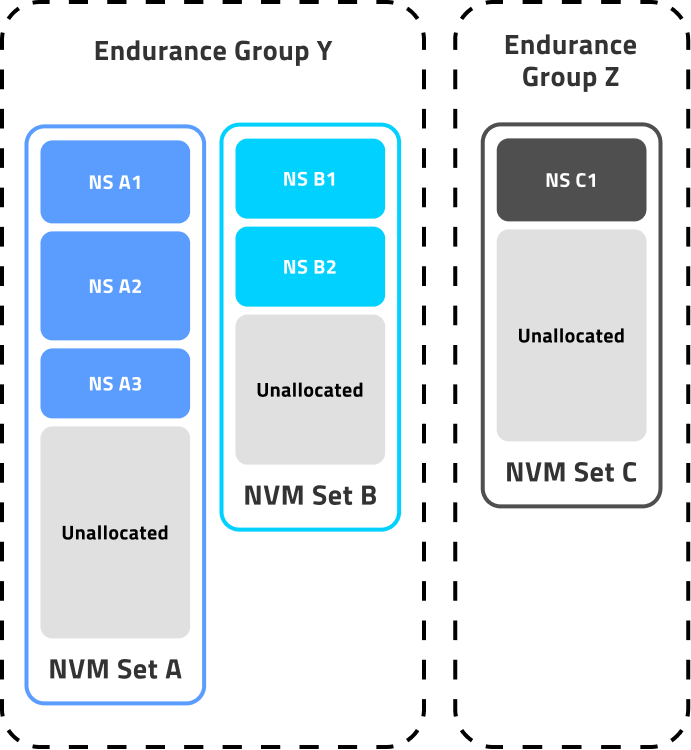DIAWAY Designs Solutions with
Western Digital Ultrastar® DC NVMe drives

BETTER WITH NVMe
Performing at the speed of business
NVMe™ SSDs enable the workloads required for modern data centers while providing rich feature sets that enable next-gen requirements so your designs are future-ready. And, with demonstrated TCO benefits, they can also be a cost-effective alternative to SATA.
Optimized for low latency and power efficiency, the Ultrastar® DC SN640 provides 5X the read performance, 2X the write performance and better TCO than SATA SSDs. The Ultrastar DC SN640 is general purpose-built to deliver the power and performance of NVMe™ to cloud, OEM and channel data centers.
GET A QUOTE
Accelerate Access to Critical Data for Data-Intensive Workloads and Applications
Performance NVMe Ultrastar DC SN840 SSDs deliver extreme performance & ultra-low latency to the top tier of enterprise storage. With proven dual-port NVMe architecture, these drives are best suited for performance demanding platforms including HPC servers, mission-critical applications and workloads that require superior read/write performance and low latency.
Mainstream NVMe Ultrastar DC SN640 SSDs are optimized for consistent quality of service and low latency for mixed random read/write workloads commonly generated by top enterprise applications such as virtualization, OLTP, NoSQL, web servers, file servers and mail servers. Ultrastar DC SN640 enables a seamless transition from SATA SSDs, delivering high performance for deeper insights & faster results for today’s data intensive applications.
DIAWAY has qualified both Ultrastar DC SN640 SSDs & Ultrastar DC SN840 SSD for its flagship products and they are readily available with new builds. Currently they are available with Acronis Cyber Infrastructure bundle, DIAWAY Edgebox™ edge solution, DIAWAY Keila™ POWERED BY EXCELERO NVMESH® offering, and Virtuozzo Hybrid Infrastructure.

Product Details
Highlights
- Performance and Mainstream NVMe SSDs
- Capacities up to 15.36TB1 in U.2 2.5" form factor
- High-performance PCIe Gen 3
- 96-Layer 3D NAND for Ultrastar DC SN840, DC SN640 and DC SN340
Applications and Workloads
- Cloud and Hyperscale computing
- Online transaction processing (OLTP)
- Online analytical processing (OLAP)
- Virtualization
- Storage Arrays
- Storage Servers
- SQL Servers
- Pattern Recognition
- Artificial Intelligence
- Machine Learning
The Power of NVMe NameSpaces
Apart from the leading performance and very competitive pricing, NVMe Ultrastar DC SN640 TCG and NVMe Ultrastar DC SN840 SSDs make use of a great technology called NVMe NameSpace. Namespace is a term introduced with NVMe SSD products which was not present with SATA and SAS devices. The NVMe specification 1.4 gives the following definition:
Without a NS created, you can’t use and store data on the NVMe SSD. All WDC Ultrastar NVMe are configured and shipped with one single NS. Default NS size is the maximum usable capacity of the SSD.
NNVMe Ultrastar DC SN640 TCG and NVMe Ultrastar DC SN840 SSDs support multiple NS, up to 128, to be precise. It is possible use the nvme cli tool and execute the following command to list the NVMe controller properties and features: nvme id-ctrl /dev/nvmexn1 (x is the controller number)

An NS is not a partition but a logical device
- Each NS is discovered as a single and independent usable device by system BIOS & OS. Here is a screenshot about one NVMe SSD which has been in 16 NS of the same size:

- Each of these multiple NS can be erased, sanitized, formatted, or encrypted independently from the others, exactly like if the NS were truly physical distinct devices.
- There is a true isolation between the NS which provides a lot of flexibility, compared to what we know with drive partitioning or LUNs with SCSI devices.
- Unlike partitions which are managed at OS level, NS are managed by the NVMe controller.
- Unlike partitions which all belong to the same device, each NS is presented to the BIOS and OS as one single distinct device.
NS count on WDC Ultrastar NVMe
What is the benefit of having multiple NS?
Multiple Namespaces from one single NVMe can be used to provide storage to multiple hosts.
Example with 4 NS and 4 hosts:

Since each NS has its own IO queues, having multiple NS give the possibility to increase the parallelism and maximize performance compared with the use of one single NS.
Multiple NS can help reduce licensing costs for some SDS products. With certain SDS solutions, license fees are directly related to the number of physical devices used, whatever the capacity of the device is (e.g., same fees applied to an 800GB and to a 15.36TB device). This is why customers typically favor high-capacity devices such as a 15.36TB.
Now, by creating multiple NS with a 15.36TB NVMe for example, it’s possible to limit the license fees and to still use a large number of devices required with the SDS solution to perform at the expected level.
Features of Namespaces for more sophisticated technologies
NVM sets & Endurance Group
Each endurance group is a separate pool of storage for wear leveling purposes

Namespace Write Protection
An NVMe namespace can be put into 1 of 3 Read Only modes:
- read-only until the next power cycle
- read-only until the first power cycle after the write protect feature is disabled
- permanently read-only for the lifetime of the drive



